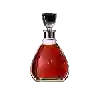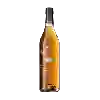
Domaine de la Casa BlancaBanyuls Doux Naturel
This wine generally goes well with beef and mature and hard cheese.
Food and wine pairings with Banyuls Doux Naturel
Pairings that work perfectly with Banyuls Doux Naturel
Original food and wine pairings with Banyuls Doux Naturel
The Banyuls Doux Naturel of Domaine de la Casa Blanca matches generally quite well with dishes of beef or mature and hard cheese such as recipes of cabri en colombo with creole sauce or basque lasagne.
Details and technical informations about Domaine de la Casa Blanca's Banyuls Doux Naturel.
Discover the grape variety: Couderc noir
Natural interspecific crossing between Jaeger 70 (Vitis Rupestris x Vitis Lincecumii) and an unknown Vitis Vinifera discovered by Eugène Contassot, the seeds from this crossing having been offered to/seeded by Georges Couderc. This direct-producing hybrid was the most widely planted, particularly in the south of France. There are still a few strains in production today, but it is practically no longer multiplied, although it is registered in the Official Catalogue of Vine Varieties, list A1. - Synonymy: Couderc 7120, Contassot 20 (for all the synonyms of the varieties, click here!).
Last vintages of this wine
The best vintages of Banyuls Doux Naturel from Domaine de la Casa Blanca are 2015, 2016
Informations about the Domaine de la Casa Blanca
The Domaine de la Casa Blanca is one of of the world's greatest estates. It offers 7 wines for sale in the of Banyuls to come and discover on site or to buy online.
The wine region of Banyuls
Banyuls wines come from the South-eastern Part of Roussillon, in the south of France, in the lower Pyrenees, a few kilometres from the Spanish border. These naturally Sweet wines are consumed both as an aperitif and as a dessert. They come in a wide range of hues, from GoldenGreen (Banyuls Blanc) to Amber (Banyuls Ambré) to the intense garnet of the standard Banyuls Rouge. Unusually among the natural sweet wines of France, all Banyuls wines are made primarily from Grenache grapes of various colors.
The wine region of Languedoc-Roussillon
Languedoc (formerly Coteaux du Languedoc) is a key appellation used in the Languedoc-Roussillon wine region of southern France. It covers Dry table wines of all three colors (red, white and rosé) from the entire region, but leaves Sweet and Sparkling wines to other more specialized appellations. About 75% of all Languedoc wines are red, with the remaining 25% split roughly down the middle between whites and rosés. The appellation covers most of the Languedoc region and almost a third of all the vineyards in France.
News related to this wine
What are the "Climats de Bourgogne" ?
Awaken the explorer within you and discover the most famous Climats of Bourgogne! Our social media: Facebook: https://www.facebook.com/BourgogneWines/ Twitter: https://twitter.com/BourgogneWines/ Instagram: https://www.instagram.com/vinsdebourgogne/ LinkedIn: https://www.linkedin.com/company/bivb Find out more on our website: https://www.bourgogne-wines.com/ ...
The Mâcon plus appellation seen by Charles Lamboley
Charles Lamboley, marketing and communication director from Vignerons des Terres Secrètes, explains the differences between the appellation Mâcon-Villages and Mâcon plus a geographical denomination. This video is taken from the “Rendez-vous avec les vins de Bourgogne” program (March 2020). The Bourgogne Wine Board (BIVB) invites you to enjoy this video in which Jean-Pierre Renard, Expert Instructor at the Ecole des Vins de Bourgogne, explains the topographical and geological characteristics of t ...
The Rully appellation investigated through its geology and geography
The Bourgogne Wine Board (BIVB) invites you to enjoy this video in which Jean-Pierre Renard, Expert Instructor at the Ecole des Vins de Bourgogne, explains the topographical and geological characteristics of the Rully appellation. Here the vineyard is planted on different hills which have very different gelogicial characteristics. It partly explains the great diversity in the expression of the Rully wines. This video is taken from the “Rendez-vous avec les vins de Bourgogne” program (February 20 ...
The word of the wine: Courgée
Name of the fruiting branch left after pruning and which is then arched along the trellis in the Jura (in the Mâconnais, it is called the tail).














